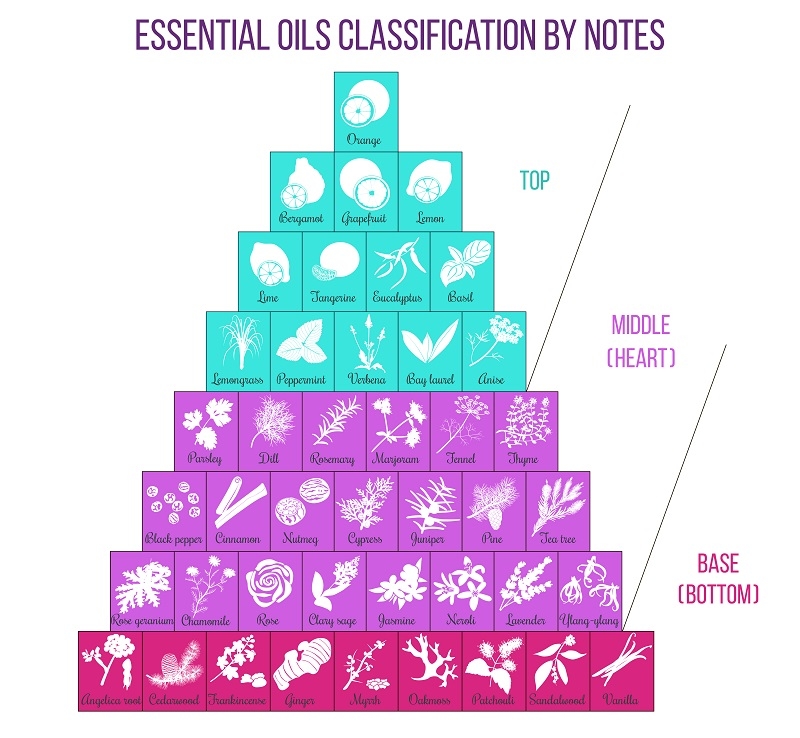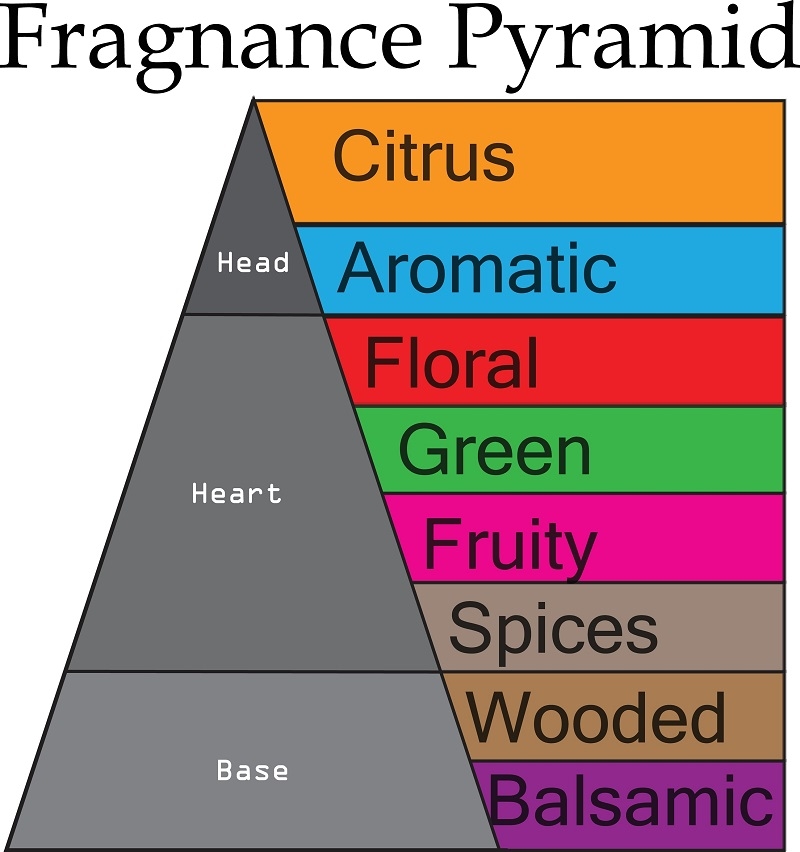
Ever sprayed on a perfume and noticed how it smelled one way at first but transformed a few hours later? That little journey on your skin isn’t random. It’s carefully designed, like a story unfolding. Perfumers actually build fragrances in layers, and those layers form something called the fragrance pyramid.
This idea is one of the simplest yet most fascinating ways to understand perfumes. And once you get it, you’ll never smell a fragrance the same way again. Let’s break it down together.
The fragrance pyramid is a model used in perfumery to explain how scents develop over time. Perfumes aren’t flat or static—they evolve. From the moment you spray, the molecules interact with your skin, your body temperature, and the air around you. What you smell right away isn’t what you’ll smell hours later.
That’s why perfumers talk about top notes, middle notes, and base notes. They’re also described as the fragrance notes pyramid, and each layer has its own role. Think of it like music. First the opening melody, then the rich chorus, then the deep finish that lingers long after the song ends.
Perfume is alive, in a sense. It breathes and changes as time passes. The fragrance life cycle pyramid captures this beautifully, showing how perfumes are designed to unfold step by step.
Each stage is important on its own, but together they make up the complete experience of wearing a fragrance.
Spray a scent, and the first thing you notice are the top notes—often called head notes perfume in the pyramid. These are light, volatile ingredients that hit the nose instantly. Citrus, herbs, or sparkling fruits are common. They’re fresh and lively, meant to catch attention.
But they don’t last long. Sometimes just 10 to 15 minutes. Their role is to make that first impression, like the opening scene of a movie. Without them, a fragrance would feel flat at the start.
Once the top fades, the middle takes over. These are known as the heart notes perfume, and they usually stick around for a few hours. They’re the soul of the fragrance. Florals like rose or jasmine, spices like cinnamon or nutmeg, or fruits with more body often appear here.
Heart notes balance freshness with depth. They carry the character of the fragrance, bridging the opening sparkle with the final grounding base. This is often the stage where people decide whether they really love a perfume.
Then comes the anchor, the notes that stay with you until the very end. These are the base notes perfume, and they’re designed to linger. Woods, resins, vanilla, amber, musk—deep, rich ingredients that hold everything together.
Base notes can last from four to eight hours, sometimes longer. They mix with your skin’s natural scent, creating a personal signature. When someone hugs you and still smells your fragrance hours later, that’s the base doing its work.

Understanding perfume pyramid notes helps you pick fragrances that suit your lifestyle. If you want something quick and fresh for the gym, focus on strong citrus top notes. For long evenings, pay attention to the base. If you want complexity, look for perfumes with rich hearts full of spices or florals.
It also helps explain why a scent might disappoint at first but become a favorite later. Or why something you loved in the store suddenly feels overwhelming after a few hours. Perfume is time-based art.
Further Reading: Beginner's Guide to Discovering Your Signature Perfume
Behind the scenes, perfumers follow the fragrance blending pyramid when creating scents. They don’t just throw notes together; they carefully structure them so the perfume feels balanced from start to finish.
For example, a fresh top note of lemon might pair with a floral middle of lavender and a woody base of cedar. The citrus pulls you in, the lavender softens the middle, and the cedar keeps it grounded. Without that pyramid structure, the fragrance wouldn’t flow—it would feel scattered.
Think of it like cooking. Salt, herbs, and spices each play different roles in a dish. Too much of one, and it throws everything off. The pyramid is a recipe that ensures harmony.
Here’s a secret: never judge a perfume only on that first spray. Give it time to reveal itself. The top might be sharp, but the heart could be warm and beautiful. Or the base might end up being your favorite part.
When testing, spray on your skin, not just on a paper strip. Your body heat and chemistry bring out nuances you won’t notice otherwise. Then wait. Smell it after 15 minutes, after an hour, after three. That’s the journey of the fragrance notes pyramid in real time.

A lot of people make the same errors when shopping for perfume. They buy after the first whiff without waiting for the heart and base. They spray too much at once, overwhelming the senses. Or they forget that what works on a friend might smell totally different on them.
Remember: perfume is personal. It’s not just about how it smells in the bottle but how it develops on your skin. That’s why understanding the fragrance pyramid is so valuable—it saves you from regrets.
Perfume isn’t only chemistry. It’s emotion. Top notes can make you feel energized, middle notes can comfort you, and base notes can stir up nostalgia. The fragrance life cycle pyramid isn’t just technical—it’s also emotional storytelling.
That’s why certain perfumes remind you of people, places, or moments. A whiff of vanilla might take you back to childhood baking, while sandalwood might remind you of a favorite trip. Each stage is tied to memory in its own way.
Just as people rotate clothes for different seasons, many create a “fragrance wardrobe.” Fresh citruses and light florals for summer. Deeper spices and woods for winter. Playful fruits for daytime, sultry bases for evenings.
When you understand the perfume pyramid notes, it becomes easier to build that variety. You’ll know which scents fade quickly and which ones anchor an outfit or mood all day.
On A Related Note: Woody Perfume Guide to Find Bold and Earthy Fragrances
Perfume is more than a bottle on a shelf. It’s art, science, and memory rolled into one. The fragrance pyramid gives us a simple way to understand that complexity, breaking down the journey into top, middle, and base notes. From the sparkle of citrus in the opening, through the warmth of the heart, to the deep woods that linger, each stage matters.
So next time you spray a fragrance, take a moment. Notice the opening, wait for the heart, and see what’s left hours later. You might find yourself falling in love with a scent all over again, simply because you slowed down to appreciate the story it was telling.
This content was created by AI